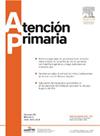Patrones clínicos del fumador mediante el análisis de su relato en un área de salud de Galicia
IF 1.8
4区 医学
Q2 MEDICINE, GENERAL & INTERNAL
引用次数: 0
Abstract
Objective
Language processing techniques such as textual analysis can identify new unknown aspects of smoking not detected by questionnaires in clinical practice. Therefore, the aim of this study is to identify through their use clinical patterns of smoking before and after the intervention.
Design
Observational, prospective, multicentre study of smokers who are ready to quit smoking and who visit a health professional. A textual analysis of the smoker's narrative was carried out.
Setting
Primary and Specialised Care settings in a health area of Galicia (Santiago-La Coruña) between 2017-2020.
Participants
Patients over the age of 18 years who go to a healthcare professional for a serious quit attempt and who agree to participate in the study.
Method
The smokers’ narratives collected through a semi-structured interview were analysed using 2 textual analysis techniques (a similarity analysis and a correspondence factor analysis).
Results
The textual corpus of 116 smokers before and after the smoking cessation intervention (221 interviews) was analysed. Smoking is the central theme in the narrative. The baseline interview is dominated by a narrative focused on the pros and cons of quitting smoking. After the intervention, the actions taken by the smoker in the smoking cessation process predominate.
Conclusions
The analysis of smokers’ narratives allows us to identify new aspects that can make smoking cessation treatment more effective.
在加利西亚的一个保健地区,通过对吸烟者的病史进行分析,确定吸烟者的临床模式
目的利用文本分析等语言处理技术,在临床实践中发现问卷调查未发现的吸烟新未知方面。因此,本研究的目的是通过他们的使用来确定干预前后吸烟的临床模式。设计观察性、前瞻性、多中心的研究,研究对象是准备戒烟的吸烟者和去看健康专家的吸烟者。对吸烟者的叙述进行了文本分析。2017-2020年期间在加利西亚(圣地亚哥- la Coruña)卫生区设置初级和专业护理设施。参与者年龄在18岁以上,向医疗保健专业人员寻求认真戒烟尝试并同意参加研究的患者。方法采用半结构化访谈法,采用相似度分析和对应因子分析两种文本分析方法对吸烟者的叙述进行分析。结果对戒烟干预前后116例吸烟者(221次访谈)的语料库进行分析。吸烟是故事的中心主题。基线访谈主要是关于戒烟的利弊的叙述。干预后,吸烟者在戒烟过程中采取的行动占主导地位。结论通过对吸烟者叙述的分析,我们可以发现新的方面,使戒烟治疗更有效。
本文章由计算机程序翻译,如有差异,请以英文原文为准。
求助全文
约1分钟内获得全文
求助全文
来源期刊

Atencion Primaria
医学-医学:内科
CiteScore
2.90
自引率
8.00%
发文量
156
审稿时长
33 days
期刊介绍:
Atención Primaria es una revista que publica trabajos de investigación relativos al ámbito de la atención primaria de salud. Desde el punto de vista conceptual, Atención Primaria asume el nuevo modelo de atención primaria de salud, orientado no sólo a la curación de la enfermedad, sino también a su prevención y a la promoción de la salud, tanto en el plano individual como en el de la familia y la comunidad. En estos nuevos aspectos que definen el modelo de atención primaria de salud es en los que se centran los trabajos de investigación que publica Atención Primaria, la primera revista de originales española creada para recoger y difundir la producción científica realizada desde los centros de atención primaria de salud sobre cuestiones como protocolización de la asistencia, programas de prevención, seguimiento y control de pacientes crónicos, organización y gestión de la asistencia primaria, entre otros.
 求助内容:
求助内容: 应助结果提醒方式:
应助结果提醒方式:


